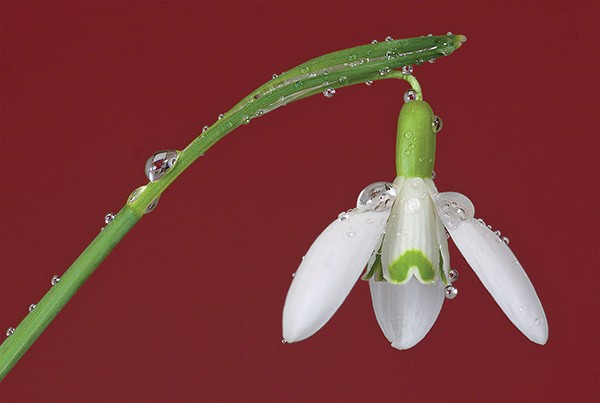
Pictured: Snowdrop.
Ruth Stout.
We have had a miserable winter. Who can forget the countryside destroyed by floods. But no matter how hard the weather, the shadow of winter will slowly fade and nature will lead us into spring. I love this time of year.
From now on, every day in the garden will be a time of expectation. The evenings will lengthen and the birds will sing again. It is lovely to see the earth awakening around us.
Take note of the plant held dear by early Christians, the lovely snowdrop, and emblem of purity. It is traditionally the flower of the Virgin Mary so it is aptly associated with this time of rebirth.
Soon we will welcome the beautiful crocus, the stately tulips, daffodils, wallflowers, pansies, polyanthus… all signs of a new season. We look forward to the beauty of the apple blossom and the lovely cherry blossoms, the magnificent magnolias and the beauty of the bluebells.
Soon we will welcome the arrival of the swallows and the winds will be busy carrying with them a precious burden of pollen from tree to tree. Many inhabitants of the plant world depend on wind to transport this pollen.
There are some beautiful shrubs demanding our attention – the lovely camella, the golden forsythia, daphne mezereum, iris harmony and Heather Arthur Johnson.
So the gardening year begins. As we prepare for the season ahead there are many tasks to keep us busy in the garden. Continue to plant fruit trees and bushes, finish the pruning of apples and pears and give all fruit trees a dressing of sulphate of potash. Sow peas, broad beans and spinach. Plant onion sets and shallots.
As the season progresses, continue to plant and sow root vegetables, lettuce, cauliflowers and asparagus. Sow white lisbon onions and parsnips. In early March sow your early potatoes and later your main crop. These will need twenty-one weeks to harvest.
Finish pruning and planting bare rooted roses. Plant gladioli four inches deep. They like a good, open sunny position away from trees. Incorporate old compost or leaf mould with a sprinkling of fertiliser, such as bone meal.
Plant at fortnightly intervals to extend your display. Start to cut the grass and apply a spring fertiliser. Now is a good time to sow new lawns and lay sods. Hard prune late summer shrubs such as fuchsias and buddleia. Sow and plant sweet peas and all hardy annuals such as cornflowers, clarkia calendula, sunflowers and cosmos.
Spray paths, tidy up edge flower beds and lawns. It is also a good time to plant herbaceous perennials and strawberry runners. On your patio top dress container plants with a good quality loam based compost.
Apply some general fertiliser and remember to water and feed with a tomato feed on a regular basis during the summer months. Grow some herbs in container and window boxes, feed and water regularly. Overall, there is plenty to keep us busy in the garden, big or small, at this time.
So as we say goodbye to the dark days of winter, as nature waves her magic wand, let’s accept her invitation to experience and enjoy all that is around us.
And given all the wet and miserable weather we have had over the past while, it is perhaps apt to end on these words of wisdom:
“Despite the forecast, live like it’s spring.”
Lilly Pulitzer.
By James O’Doherty

